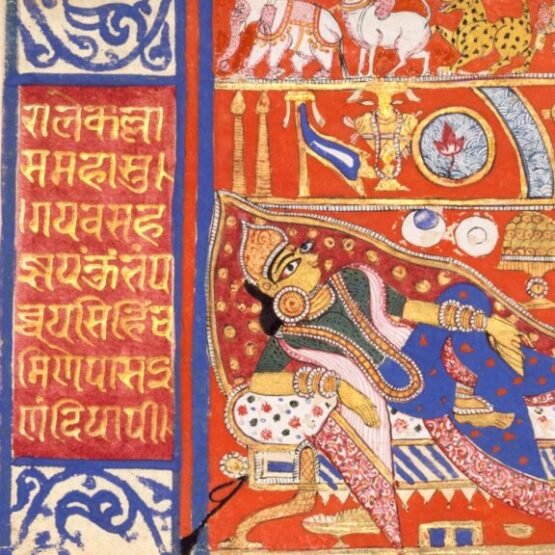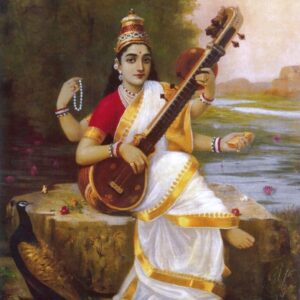Experience a unique musical heritage.

A long history
Carnatic music is a classical music tradition that originates from the south of India, particularly from the states of Tamil Nadu, Andhra Pradesh, Telangana, Karnataka, and Kerala.
It’s one of two main sub-genres of Indian classical music that evolved from ancient Hindu texts and traditions, particularly the Samaveda, one of the oldest Hindu religious texts, going back at least 3,000 years.
A strand of divinity
Divinity, spirituality and music are particularly intertwined in Indian culture. There’s hardly a religious text or epic that doesn’t talk about music and its divine connotations.
For example, an ancient text called the Yajnavalkya Smriti states, “The one who is well versed in veena ( the instrument pictured in the accompanying graphic), one who has the knowledge of srutis and one who is adept in thaala, attains liberation (moksha) without doubt.”


The hobby of kings
Carnatic music was long patronized by kings of every notable royal house in South India, such as Krishna Deva Raya of the massive Vijayanagar empire (ruins pictured) of Karnataka.
The kings of Travancore and the Wodeyar dynasty of Mysore were themselves skilled composers and musicians. One of the songs Anjan plays was composed by Raja Swati Tirunal of Travancore. It’s an uplifting piece and a perennial favorite of audiences everywhere!
The warp and weft of Carnatic music
Carnatic music is primarily vocal-centric, although it includes instrumental performances as well. Every composition is a harmonious blend of three main elements: Raga (melody), Thaala (rhythm), and Saahitya (lyrics).
A concert will typically have a lead artist – usually a vocalist accompanied by a violinist. The mridangam is the primary percussion instrument. In this arangetram, Vishaal on the chitravina is the lead feature artist, ably accompanied by Shruti on the violin. You’ll be mesmerized by their mastery of the art.
Each piece is a composition that carries a message of a particular emotion (“bhaava”) – it could be love, sorrow, devotion, or joy. What’s lovely is that different raagas (or melodic arrangements) typically evoke different emotions. Carnatic music even has raagas associated with times of the day or seasons!
The thaala seamlessly accentuates the emotion with its slow or fast tempo to match the mood of the song. In a great concert, you’ll see a masterful blend of emotions, tempos, melodies and moods.
Enjoy this masterpiece featuring Akshay and Ambi Subramaniam, a violin virtuoso! In this song, the devotee pleads with the baby incarnation of Lord Krishna to come into his home, with the ardor of maternal affection.
And now, enjoy another fast-paced, modern take on a traditional favorite.
How does it feel different from the first?
What do you experience with each?
Can you feel a difference in the emotions each song invokes?
How about the tempo?
Carnatic music, like every art form, is evolving, growing and thriving.
Talented young artists like you hear at this arangetram are embracing this ancient art form with enthusiasm and dedication.
With hundreds of ragas and thaalas, and an infinite number of creative variations built into its structure, there is literally no limit to what is possible within the graceful boundaries of this musical form.
Here is a beautiful rendering of a classic composition, a duet featuring Adithya Chakravarthy, accompanied by Vid. Akshay on the mridangam, which includes a characteristic improvised sequence within. Enjoy!
How This Concert is Structured
Compositions
The concert features 8-9 compositions in different ragas and thaalas, each lasting between 5-15 minutes. This structure provides a setting for Anjan to call on a myriad of techniques, tempos and styles while providing variety and listening enjoyment to the audience.
Percussion Solo
A key part of the concert is a brief but intense solo performance on the mridangam, featuring a carefully sequenced set of rhythms, all within the “thaala” of the piece it is set in.
Brief Interludes
The concert commences with an invocation for an auspicious event, and will feature brief remarks by the chief guest and guest of honor. It will conclude with a benediction.